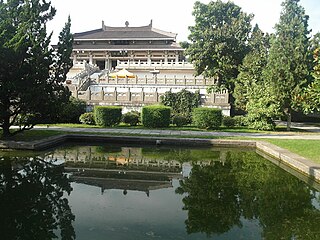 W
WChinese tea culture refers to how Chinese tea is prepared, as well as the occasions when people consume tea in China. Tea culture in China differs from that in European countries, like Britain, and other East and Southeast Asian countries, like Japan, Korea, and Vietnam, in preparation, taste, and occasion when it is consumed. In China, tea is still consumed regularly, both on casual and formal occasions. In addition to being a popular beverage, it is used in traditional Chinese medicine as well as in Chinese cuisine.
 W
WDouble Happiness sometimes translated as Double Happy, is a Chinese traditional ornament design, commonly used as a decoration symbol of marriage. Outside of China, it is also used in the United States, Europe, East Asia and Southeast Asia.
 W
WThe character Fú meaning "fortune" or "good luck" is represented both as a Chinese ideograph and, at times, pictorially, in one of its homophonous forms. It is often found on a figurine of the male god of the same name, one of the trio of "star gods" Fú, Lù, Shòu.
 W
WHikimayu (引眉) was the practice of removing the natural eyebrows and painting smudge-like eyebrows on the forehead in pre-modern Japan.
 W
WThe Peach Blossom Spring, or Peach Blossom Spring Story or The Peach Blossom Land, was a fable written by Tao Yuanming in 421 CE about a chance discovery of an ethereal utopia where the people lead an ideal existence in harmony with nature, unaware of the outside world for centuries.
 W
WA sky lantern, also known as Kǒngmíng lantern, or Chinese lantern, is a small hot air balloon made of paper, with an opening at the bottom where a small fire is suspended.
 W
WTeeth blackening or teeth lacquering is a custom of dyeing one's teeth black. It was most predominantly practiced in Southeast Asian and Oceanic cultures, particularly among Austronesian, Austroasiatic, and Kra–Dai-speaking peoples. It was also practiced in Japan prior to the Meiji era, as well as in India. It was also performed among some groups in the Americas, most notably among the Shuar people of northern Peru and Ecuador.
 W
WIn Chinese philosophy, the three teachings are Buddhism, Confucianism, and Taoism, considered as a harmonious aggregate. Literary references to the "three teachings" by prominent Chinese scholars date back to the 6th century. The term may also refer to a non-religious philosophy built on that aggregation.
 W
WYan Huang Zisun is a term that represents the Chinese people and refers to an ethnocultural identity based on a common ancestry associated with a mythological origin.